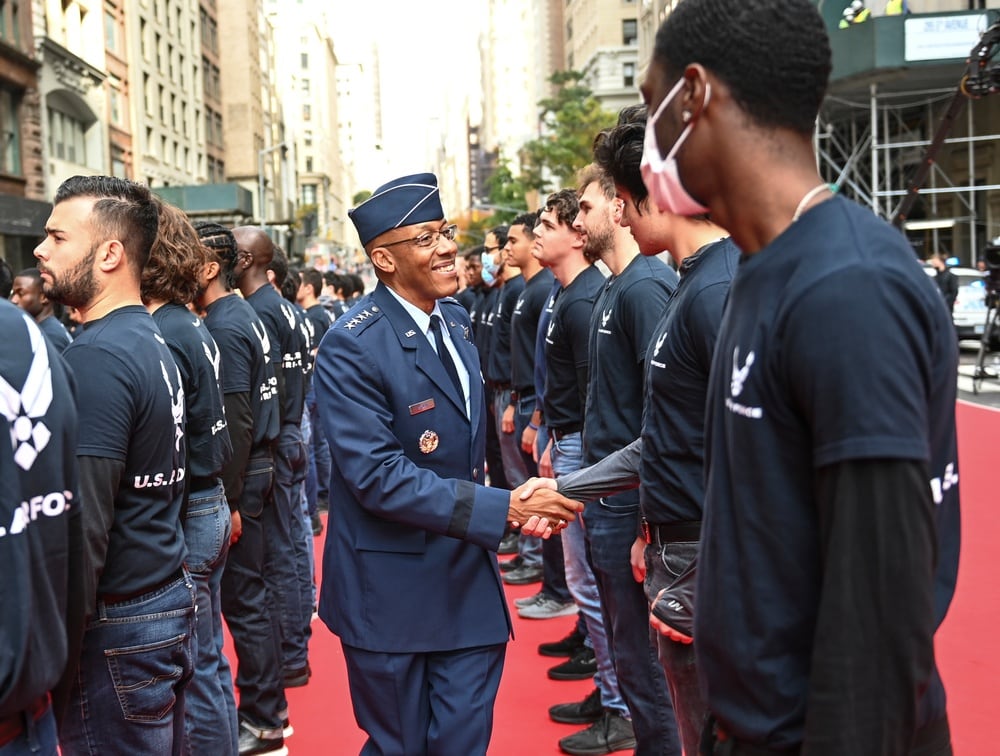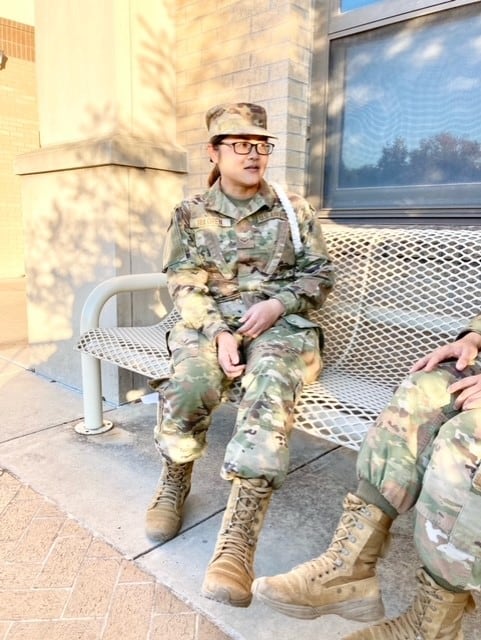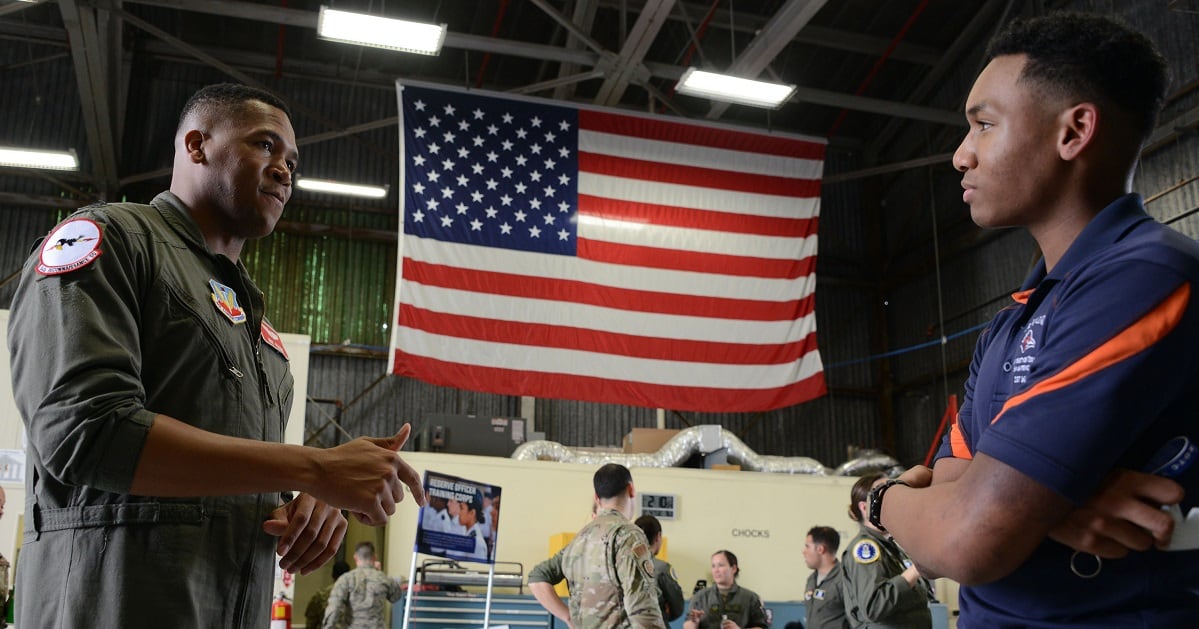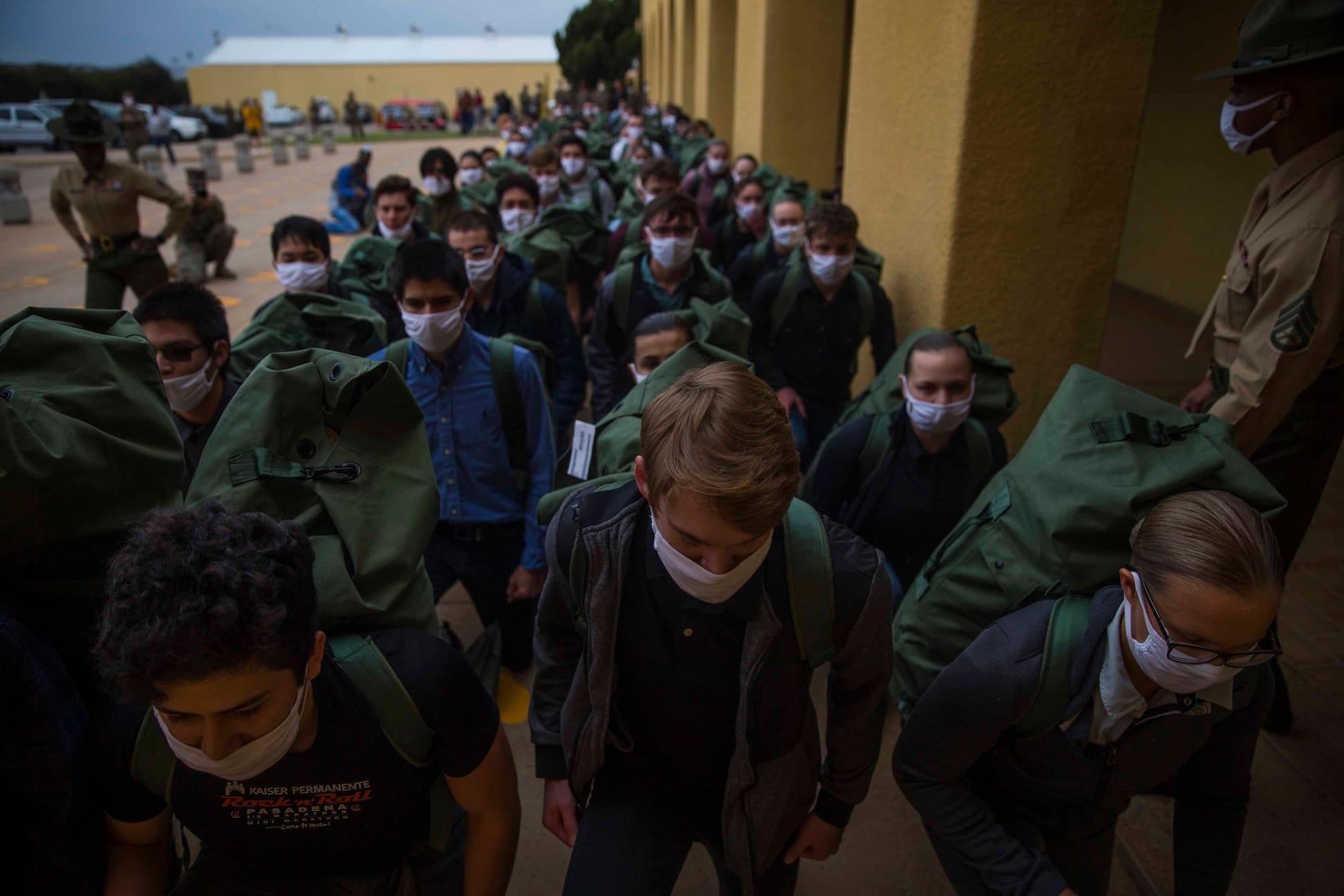The Air Force is fighting an uphill battle to meet this year’s recruiting goals, the two-star general in charge of recruitment warned in an email earlier this month.
“We have warning lights flashing,” Maj. Gen. Ed Thomas told Air Force Recruiting Service employees on Jan. 10 in a letter verified by Air Force Times.
It’s a stark contrast to just four months ago, when the Air Force said it hit its service-wide recruiting and staffing goals for the first time in five years. About 501,000 troops currently serve in the Department of the Air Force, including 326,000 active duty airmen and Space Force guardians.
RELATED

But that good fortune may not last in 2022.
“Two years into COVID-19 and amidst U.S. labor shortages, our pool of qualified applicants is about half of what it should be at this point in the year,” Thomas said in an emailed statement. “We believe FY22 goals are attainable but will be tougher to accomplish than in at least a dozen years.”
Several factors are at play: a shifting economic landscape in the third year of the coronavirus pandemic, which has prompted many schools to shut out visitors; lower recruiting goals spurred by unusually high worker retention amid COVID-19 uncertainty; an obesity epidemic shrinking the pool of eligible Americans; and young people’s consistent disinterest in military service, among others. The recruiting service says it doesn’t have any real sense of whether the vaccine mandate is having an effect. But the relatively low number of recruits who were separated for refusing the vaccine indicates it is likely not the primary factor.
The Air Force hopes to bring more than 26,000 airmen, largely enlisted, onto active duty by Sept. 30. As of the end of December, it was nearly one-quarter of the way to that goal, according to data the service provided to Air Force Times. So, recruiters met their active duty goal for the first quarter of fiscal 2022, but recruiting slows down this time each year. The current pool, smaller than in previous years, may not be large enough to overcome it.
The Air Force Reserve has reached 21 percent of its 2022 goal; the Air National Guard stands at 16 percent. Both components brought in around 1,400 enlisted airmen in the last three months of 2021.
RELATED

“Our ‘qualified and waiting’ list is about half of what it has been historically, lead conversions are down, propensity has dipped, unemployment is down, our public engagement and time in schools is at an all-time low, and we’ve had two years of limited recruiter training opportunities,” Thomas wrote to airmen.
The problem boils down to a trickling enlistment pipeline as the Air Force heads into its typically slow winter recruitment season. The service takes in anywhere from 500 to 800 prospects a week, and spreads them out so that Basic Military Training isn’t overwhelmed in some months and slow in others.
There’s usually a six-month backlog of enlisted recruits waiting to ship out, but that’s dropped to about four and a half months, Recruiting Service spokeswoman Leslie Brown said.
About 4,800 people entered the Air Force from October to December 2021, compared to more than 7,100 who sought to become enlisted airmen during the same period in 2020. Yet enlisted recruiting targets remained essentially flat between the two years, dipping from 26,641 in 2021 to 26,151 in 2022.
RELATED

Similarly, around 19,500 people, or 38% of those whom the Air Force contacted from October to December 2020 were willing and qualified to join the service. That fell to one-quarter of newly contacted people in the same months in 2021. That data is somewhat skewed by changes to how the Air Force defines a recruiting “lead,” Brown cautioned.
It’s more difficult to build up the bench in the cold winter months — for instance, before students decide what to do after high school. That means the Air Force is under more pressure to make up for any lost ground in the final six months of the fiscal year.
“While we are still ahead of the curve, we are not as ahead as we desire,” Brown said.
The recruiting branch acknowledged it needs to come up with new strategies and marketing to connect with Americans who are eligible for or interested in military service.
RELATED

In particular, the Air Force wants to emphasize “shared values, versatile career options and personal development opportunities within today’s military,” spokesman Randy Martin said.
A fall 2020 Defense Department study of about 3,300 Americans between the ages of 16 and 21 found that only 2 percent of those polled would “definitely” serve in the military in the next few years, and 9 percent would “probably” serve. Both have remained generally flat over the past 20 years.
While money was the top reason given for why someone would join the military, “to help others” came in fourth. Thomas has publicly voiced concerns that young people misunderstand military service, and that America’s growing polarization is turning youth off to joining up as well.
“We’ve got to do the basics — the blocking and tackling — of recruiting well, REALLY well,” Thomas told recruiters. “Aggressively engage, be present in our communities, our storefronts and offer opportunities in uniform like nobody’s business.”
Rachel Cohen is the editor of Air Force Times. She joined the publication as its senior reporter in March 2021. Her work has appeared in the Washington Post, the Frederick News-Post (Md.), Air and Space Forces Magazine, Inside Defense, Inside Health Policy and elsewhere.





